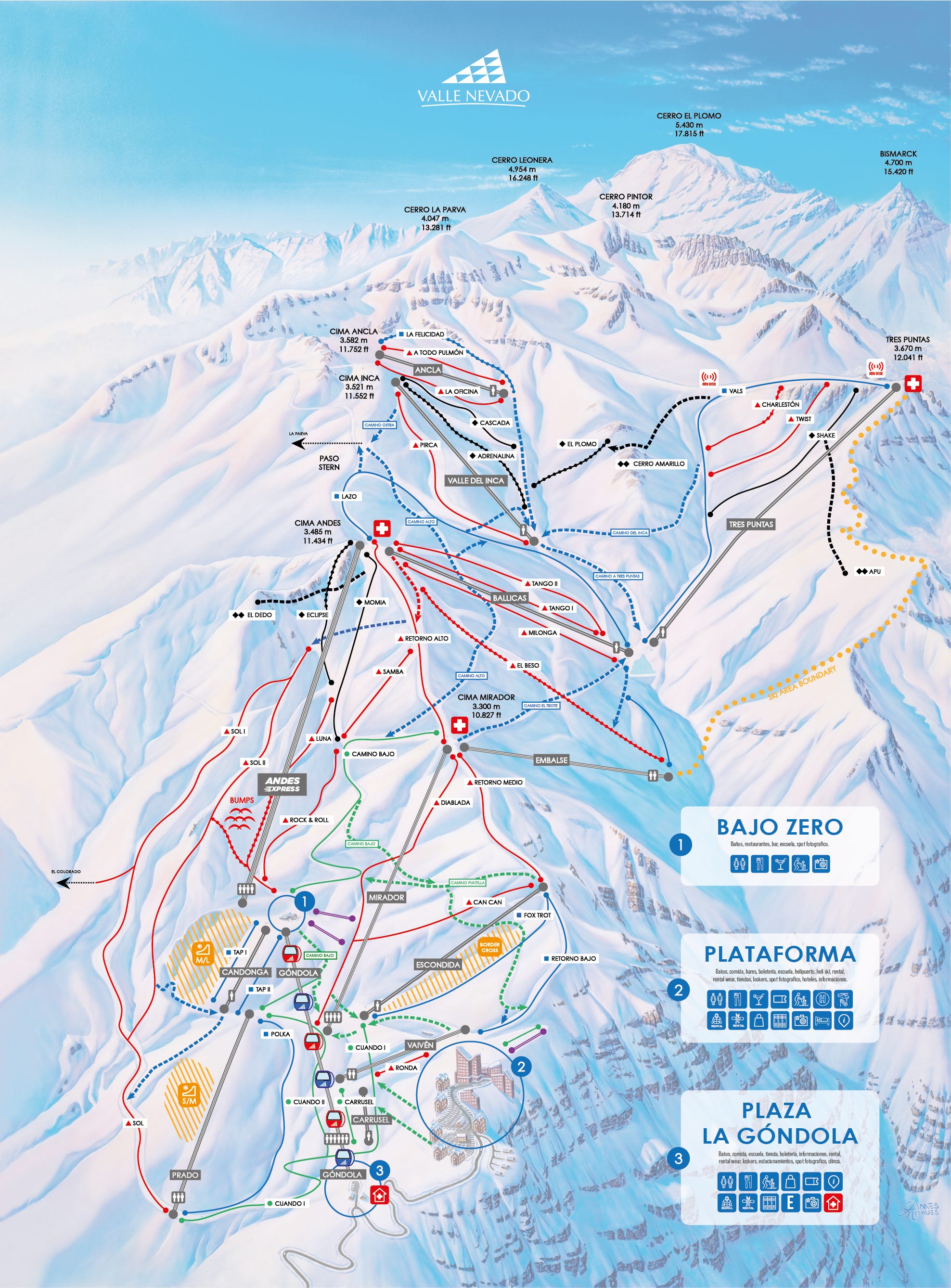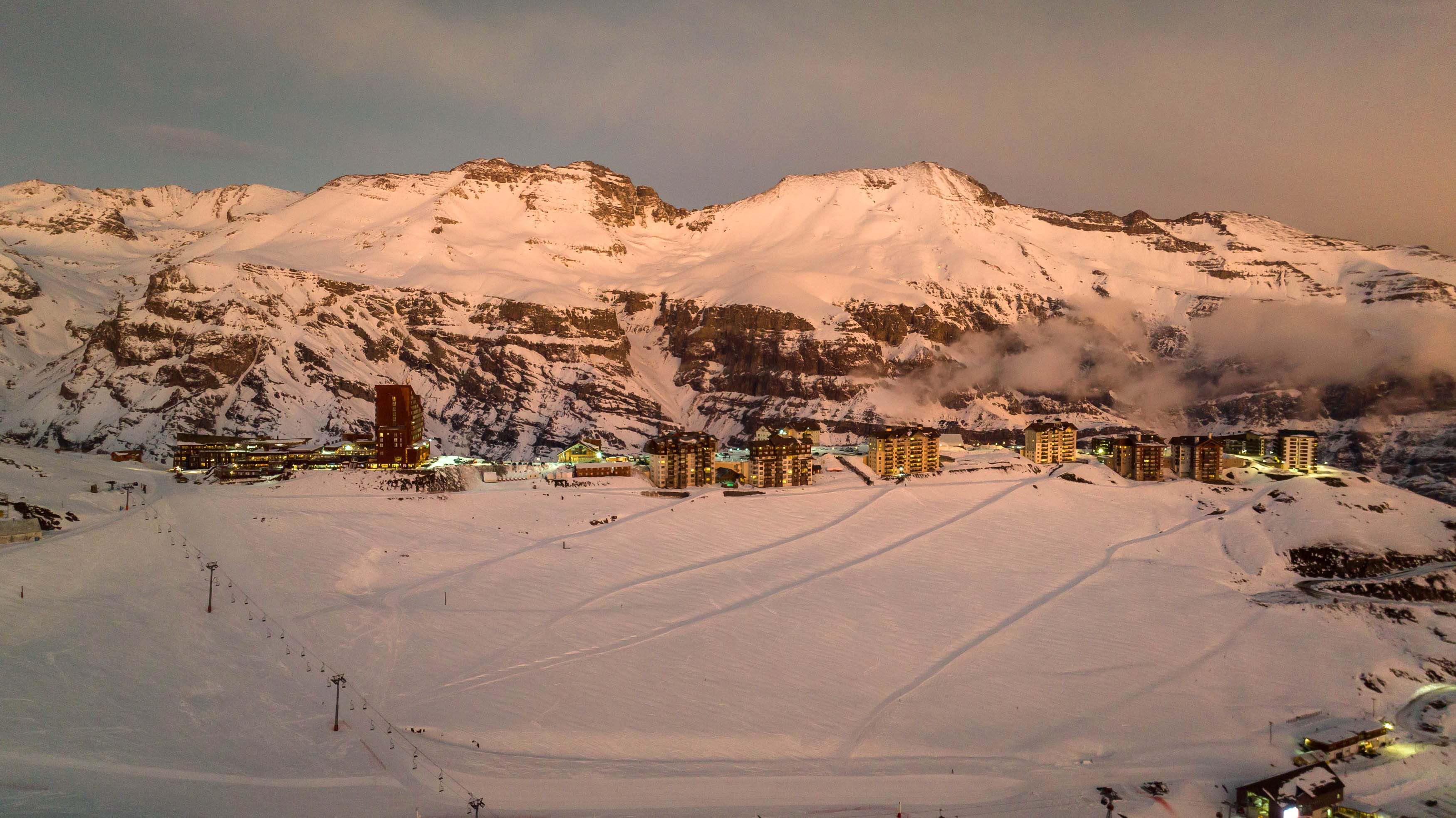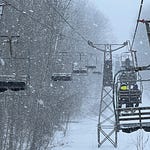Who
Ricardo Margulis, General Manager of Valle Nevado, Chile
Recorded on
July 3, 2023
About Valle Nevado
Click here for a mountain stats overview
Owned by: Majority owned by Mountain Capital Partners
Located in: Lo Barnechea, Chile
Year founded: 1988
Pass affiliations:
Base elevation: 9,383 feet
Summit elevation: 12,041 feet
Vertical drop: 2,658 feet
Skiable acres: 2,200 lift-served (20,000-plus additional acres served by helicopter)
Trails: 44
Average annual snowfall: 276 inches
Lift fleet: 16 lifts (1 gondola, 1 high-speed quad, 1 fixed quad, 1 triple, 2 doubles, 1 T-bar, 6 J-bars, 3 carpets)

Why I interviewed him
The Storm is firmly anchored in North America. Built on 4 a.m. alarms and winding explorations of the Whites and the Greens and the Adirondacks and the Catskills and the Poconos and the Berkshires. Flights west to the Rockies and the Wasatch and the Sierras. Born on bumps rising from the Midwest flats.
That domain will always be the core of this thing. Two years ago, I blew out of the Northeast to expand coverage to the entire United States. This year, I began folding in Canada. I can’t go any farther. I don’t know how many ski areas there are on planet Earth, but an educated guess is a minimum of 10,000, with more than half of those being in Europe. If I live to be 1,000 I might get there. But I won’t so I need to fence the yard.
However. Just because I live in and focus on North America does not mean my interests stop at the oceans. The world’s vast and varied ski cultures are worth considering, as outlets to disrupt our biases, as wells of supreme adventure, and as crucial links in the story of skiing, which fuels the evolution of our domestic obsession in crucial, often unseen ways.
But I have to pick my spots. This podcast is built less on novelty than on perspective and completeness. There are only so many far-flung spotlights that my listeners will tolerate, just as there are only so many episodes on ropetow bumps or the Midwest or even mighty New England that they can handle (this rule does not apply to the West). So where, in this whole wild world of endless skiing and endless snow, do I focus?
My first entry in this very occasional international series landed almost two years ago, when I hosted the longtime general manager of Mt. Buller, Australia on the podcast. Why Mt. Buller? Well, frankly, they reached out to me and asked. But the ski area also hangs onto a strong North American connection: it is a longtime Ikon and Mountain Collective partner. If my readers are planning a Southern Hemisphere run over our summer, they likely scan the Epic and Ikon rosters before they do anything else.
Enter: Valle Nevado. It is the only South American option for skiers clutching a North American ski pass. Vail’s Epic Pass, believe it or not, gives you nothing in Argentina or Chile – the only serious ski destinations on the continent. But Ikon, Mountain Collective, and, now, Mountain Capital Partners’ Power Pass all give you between two and seven days at the Chilean resort.
Not that skiers don’t have other options. Lift tickets to Las Leñas, Argentina’s second-largest ski area, are just $66. Catedral Alta Patagonia, the nation’s largest, sells a ticket for a pricier but still reasonable $108. El Colorado, right next door to – and connected with – Valle Nevado sells a daily lift ticket for around $73. Unlike large parts of U.S. American skiing, you can still ramble without a pass through the Andes (though I expect both Vail and Alterra to eventually acquire or partner with more ski areas throughout the continent).
But “free” lift tickets are a powerful draw, even for many travelers with the means to voyage to South America for a ski trip. And a lot of North Americans are going to end up at Valle Nevado for as long as it retains its trio of U.S.-based pass memberships. It’s a place that, when I’m considering what matters to my readers and my listeners, fits right in.
What we talked about
A strange snowstorm to start the Chilean ski season; the best time of year to ski Chile; target closing dates; “in 2020, Chile was closed”; the first normal summer for international visitors since 2019; the Valle Nevado origin story; enter Mountain Capital Partners; the MCP way; MCP’s investment priorities; the prevalence of surface lifts at Valle Nevado (and South America in general); why Valle Nevado would rather install a new lift in a new place than upgrade a surface lift to a chairlift; where the resort could potentially expand; the resort’s massive heliski operation; 7,000 feet of vert!; a ski circus at the top of the Andes; how you can ski La Parva and El Colorado if you’re a Valle Nevado hotel guest, or if you show up with an Ikon, Mountain Collective, or Power Pass; why Valle Nevado joined so many U.S.-based megapasses; whether Valle Nevado will renew with Ikon and Mountain Collective when its contracts expire; Valle Nevado’s evolving position on the Power Pass; staying at the village; why international visitors shouldn’t rent a car; the wild, 8,000-foot-elevation access road up from Santiago; why the road is safer than it looks; and snowmaking past, present, and future.
Why I thought that now was a good time for this interview
In January, Mountain Capital Partners, the under-the-radar but aggressive Southwest operator that is rapidly growing its U.S. portfolio, announced its intention to acquire a majority stake in Valle Nevado. They closed on the deal in April. It was the first acquisition of a South American ski resort by a North American ski company (at least that I’m aware of; I’m sure there’s some newspaper clipping from 1946 about the eccentric Hayward “Skip” McSteeljaw, owner of Mt. Buckaroo, New York cowboying a remote Argentinian peak at which to pass his summers).
This was a big deal. By beating Vail and Alterra to the continent, MCP signaled that the company intends to compete at an international scale. Prior to this purchase, MCP ran one of the most important regional ski passes in the United States. But no one seriously considered it a competitor to the Epic or Ikon passes outside of its immediate markets. Perhaps they still don’t, but perception matters. And by reaching outside of its Southwest home turf with a crown-jewel purchase that trumps its current alphas – Arizona Snowbowl and Purgatory – in international prestige, MCP has evolved from a slick local operator to an ambitious and aggressive growth machine that could be a serious contender when and if North America’s remaining megaresorts – Jackson Hole, Telluride, Taos, Alta, Whitefish, etc. – hit the market.
MCP also introduced a unique problem to the rapidly evolving U.S. megapass market: what happens when a small conglomerate with its own multi-mountain pass purchases an Ikon Pass partner? Ikon has so far tolerated some crossover with competing passes – all but four of Mountain Collective’s partners (Sugar Bowl, Grand Targhee, Le Massif, and Marmot Basin), are also on the Ikon Pass. Aspen’s four mountains have their own pass, as do Boyne’s three New England Ikon Pass partners: Loon, Sunday River, and Sugarloaf. Alterra surely loses some market share to Mountain Collective, but the pass is run out of Aspen, which partly owns Alterra.
The Power Pass presents a different test case: will Alterra tolerate internal competition from a regional pass that competes directly with Ikon in the Southwest? The answer, for now, seems to be “probably.” Valle Nevado’s contract with the Ikon Pass lasts through 2025. Alterra and Mountain Collective both gave the resort permission to join the Power Pass, Margulis said, starting with the current ski season. Alterra either doesn’t view the Power Pass as a serious threat yet, or is not eager to let go of its only South American resort partner. For North American skiers, a trip to Chile – which sits in the Eastern timezone – is a lot easier logistically and financially than a run to New Zealand or Australia, which are so remote that it’s already February 2029 there.
The other side of this question is just as interesting: will rowdy and rabidly independent MCP have any interest in retaining Ikon or Mountain Collective membership? A big part of the company’s identity, after all, is not being Vail or Alterra, or even Boyne or Powdr Corp. How do they take Alterra’s money without compromising some of their double-bird-to-the-system rep? It probably depends on how big the check is. Margulis tells us in the podcast that Alterra transferred around $300,000 into Valle Nevado’s bank account last year. If each Ikon redemption equaled $50 (an estimate based on nothing, I’ll admit), that would equal 6,000 visitors. Not a lot in the context of how many Ikon Passes Alterra sells each year (which is probably approaching or past 1 million, a number that’s based on deep sources), but a substantial bonus for a resort that’s seated at the end of the earth. MCP is unlikely to replace that number with Power Pass visits, so what to do?
I get into all this with Margulis in the podcast. He is a thoughtful, diplomatic leader, and he endorses all parties without committing to any of them. But one thing is clear: the pass roulette playing out in the Andes over the next few years is a wargames scenario likely to repeat at one or more key North American resorts over the coming decade. This is World War Skiing, the First Battle. There will be alliances, betrayals, surprises, surrenders. As usual, America is right in the middle, and it’s too soon to tell if that’s good or bad for everyone involved.

What I got wrong
I noted that Valle Nevado was on its “fifth season” as an Ikon Pass and Mountain Collective partner. The ski area actually joined Mountain Collective following its 2014 ski season, making 2023 the ninth season of membership on that coalition. The resort joined Ikon in November 2018, making 2023 the fifth numerical summer for Ikon Pass holders, though the third or fourth in practice. Chile was closed to international visitors for the 2020 and ’21 ski seasons, and the resort did not open at all in 2020, meaning that, practically speaking, this is the third year that most Ikon Pass holders could really use their pass at Valle Nevado.
Why you should ski Valle Nevado
Until you’ve seen it, you can’t possibly understand the drama. Imagine if the Rockies mainlined ‘roids like a 1990s baseball slugger. Or got really pissed off and went Incredible Hulk. Or they went U.S. American homeowner and built an extra vertical wing atop their peaks. As I wrote when MCP announced the Valle Nevado acquisition in January:
Colorad-Bro can be an insecure animal. One of his favorite pastimes is telling people from other states that they don’t have real mountains. Just hills in Vermont, he’ll say. We have mountains in Colorado, he says proudly. As though he chiseled them himself from the Earth’s crust.
I wonder what Colorad-Bro does when he meets someone from Chile or Argentina, both of which sprawl from the peak of Aconcagua. At 22,838 feet, it’s 8,399 feet taller than Mount Elbert, the highest peak in Colorado. That’s like stacking Copper and A-Basin and Keystone on top of Elbert – and still looking 140 feet up to the top. This must make Colorad-Bro sad.
Valle Nevado doesn’t reach those heights, but with a base at 9,383 feet, it sits higher than most North American ski areas. The terrain is entirely above treeline, enormous and exposed, a snow basket at the top of the world.
Admittedly, Valle Nevado’s lift-served numbers are modest compared to the North American skyscrapers: 2,200 acres and 2,658 vertical feet. That’s about the size of Discovery, Montana or Kirkwood. And above-treeline skiing always feels smaller to me. This may seem paradoxical, as no trees equals more terrain, but one glade run at a small ski area like Berkshire East can feel larger than a whole open bowl, as each line feels distinct in a way that un-treed skiing never can.
Valle Nevado, however, must be considered in this context of its interconnected neighbors: 1,100-acre El Colorado and 988-acre La Parva. They cannot be skied on one lift ticket, but maintained and signed trails run between both resorts and Valle Nevado. That gives skiers 4,288 acres to play in – more than Mammoth (3,500 acres), Northstar (3,170 acres), or Winter Pak (3,081 acres), and roughly the size of Mt. Bachelor. If you’re really balling, the heli runs – some up to 7,000 vertical feet – are right there too.
And then there’s all the rest of it: Chile, vino, Santiago, that surreal road up from the flats, the passport stamp, winter-in-summer, the food, the parties, the international stir. Oh and this:
Podcast Notes
On Mountain Capital Partners
Mountain Capital Partners has been the fastest-growing U.S. ski conglomerate over the past year, adding three new ski areas: Willamette Pass, Oregon (as operator); Valle Nevado; and Lee Canyon, Nevada. Here’s how the company’s current roster stacks up:
The company has basically guaranteed that it’s not finished empire-building – April’s Lee Canyon announcement noted that “future resort investments are being explored and will be announced at a later date.” Untethered by the attributes that define Vail and Alterra’s purchases – either a mega-mega or big-city-adjacent – MCP could land its ship just about anywhere.
On the Power Pass
MCP has collected all of those resorts on its Power Pass, an outstanding product that, like Ikon and Epic, also delivers days at non-owned resorts:
Sadly, the Power Pass site has no mention of days at Copper Mountain, which last season was included on the top-tier pass.
On La Parva
Base elevation: 8,704 feet
Summit elevation: 11,722 feet
Vertical drop: 3,022 feet
Skiable acres: 988
Trails: 40 (18% expert, 43% advanced, 20% intermediate, 20% beginner)
Average annual snowfall: 118 inches
Lift fleet: 15 lifts (2 quads, 2 triples, 1 double, 10 surface lifts)
On El Colorado
Base elevation: 7,972 feet
Summit elevation: 10,935 feet
Vertical drop: 2,963 feet
Skiable acres: 1,100
Trails: 98 (34% expert, 32% advanced, 17% intermediate, 17% beginner)
Average annual snowfall: N/A
Lift fleet: 19 lifts (3 triples, 1 double, 15 surface lifts)
On Les Arcs
Margulis mentions Valle Nevado’s connection to Les Arcs, France. This doesn’t have much to do with the actual story, but I thought we would all appreciate looking at this trailmap:
Les Arcs is actually four interconnected ski areas. Here are the combined stats, in case you’re wondering:
Base elevation: 3,937 feet
Summit elevation: 10,583 feet
Vertical drop: 6,646 feet
Skiable acres: Who knows. Euros measure their resorts in kilometers of slopes, and Les Arcs covers 425 “KMs,” whatever that means
Lift fleet: 52 lifts (8 “gondolas etc.”, 27 chairlifts, 17 surface lifts)
On that wild access road
If I rode up from Santiago to the ski resorts floating on the western edge of the Andes mountains today, I would come away with videos and photos of the wild endless switchbacks. But the last time I ascended the route – from a Santiago ski shop to El Colorado – was in 2005, before the Pet Rectangle redefined and ruined our collective lives. So all I have are my memories: a suicidal minibus driver charging uphill with little regard for life or the consequences of high-speed mountainside collisions. No guardrails. Passing on blind curves. Like we were filming some South American Bourne movie. But we weren’t. We were just going skiing. Dear Lord.
Margulis tells me the highway is much safer now, and who knows if I’m even remembering it correctly, as I’d spent the previous two days in a borderline hallucinatory state brought on by Argentinian lettuce. It was a weird week.
The Storm publishes year-round, and guarantees 100 articles per year. This is article 62/100 in 2023, and number 448 since launching on Oct. 13, 2019. Want to send feedback? Reply to this email and I will answer (unless you sound insane, or, more likely, I just get busy). You can also email skiing@substack.com.
























